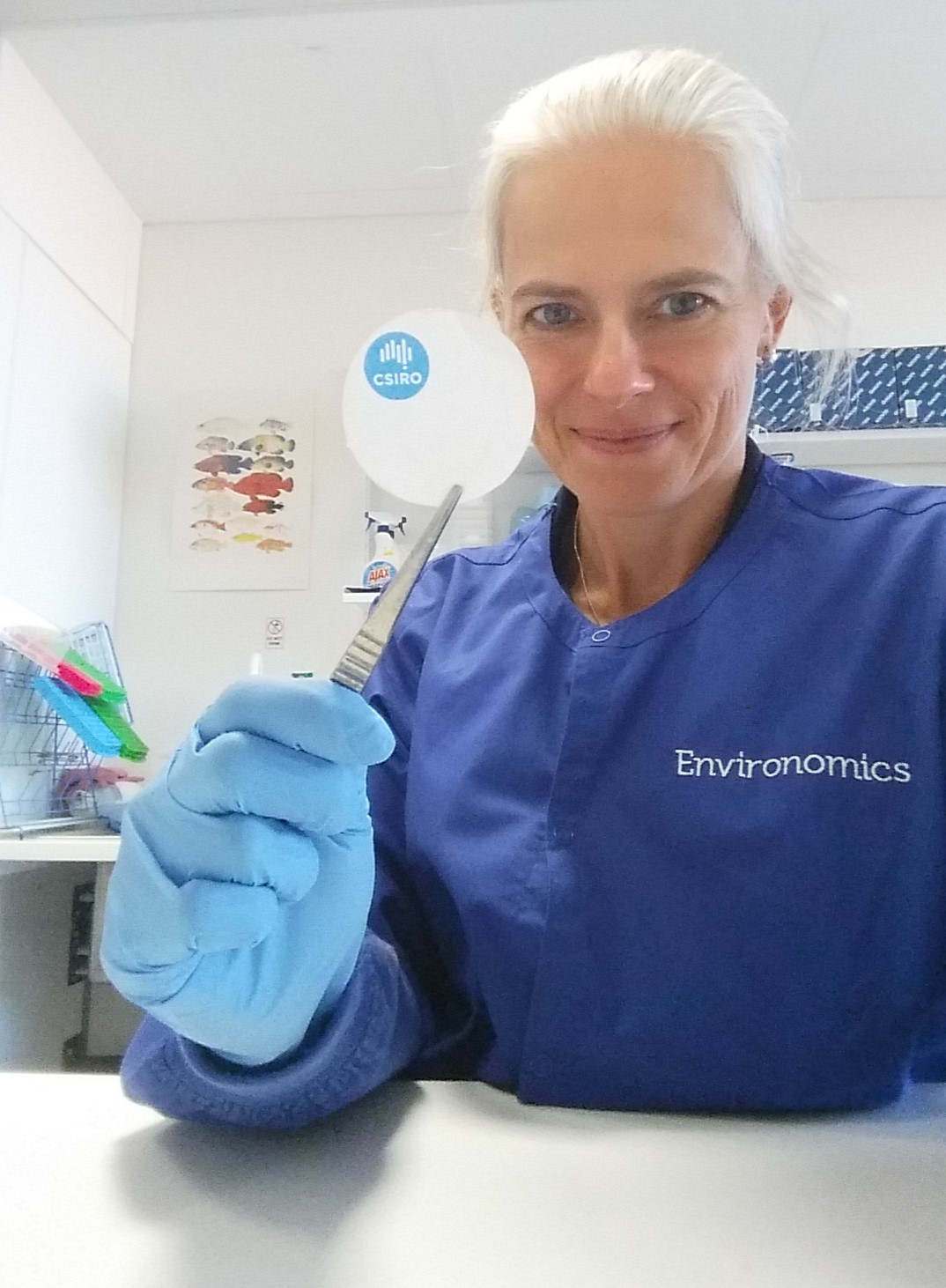A new study from Australia’s national science agency, CSIRO, in waters off the Western Australian coast has showed floating a special kind of filter paper in seawater can reveal which species are present in an area.
The study detected eDNA (environmental DNA), which is shed by plants and animals in aquatic environments, leaving behind unique traces from each species.
 Dr Cindy Bessey uses a special filter paper to collect samples.
Dr Cindy Bessey uses a special filter paper to collect samples.
Until now, collecting eDNA was time consuming, requiring pumps and other equipment to filter seawater samples.
The discovery means suspending cellulose filter papers in sea water could be a low-tech way to survey the fish species present on reefs, monitor biodiversity in Australia’s remote Marine Parks or provide early warning of biosecurity pests.
Dr Cindy Bessey is a marine scientist with CSIRO’s Environomics Future Science Platform.
“Our new method means it is no longer necessary to filter sea water to collect eDNA, saving time and opening up the technology for use in places where access to equipment or power is limited,” Dr Bessey said.
eDNA is recognized as a humane alternative to trawling, and safer than using divers, to detect species and assess biodiversity.
Passive eDNA collection using filter papers enables more samples to be collected, increasing the range of ecological questions that eDNA can address.
“Many studies investigating biodiversity or species distribution require more samples than it’s possible to collect if you need to filter eDNA from water,” Dr Bessey said.
Dr Bessey’s inventive use of filter papers was inspired by spending many hours at sea in a small dinghy with a water filter strapped to her back.
“It would take me nearly 30 minutes to filter water through just three filter papers at one site,” Dr Bessey said.
"I knew I needed to find a more efficient way if I was going to survey 100 sites."
The study drew eDNA samples from contrasting WA marine areas – tropical Ashmore Reef and temperate Daw Island.
The results have been made publicly available on the Atlas of Living Australia.
“We’ve given people open access to a visual representation of the species we detected as well as the eDNA sequences we observed during the study,” Dr Olly Berry, director of the Environomics Future Science Platform at CSIRO said.
“The means our results are available for anyone who wants to access eDNA information from our study areas.
“It’s amazing how much information about biodiversity can be collected from simple filter papers dipped into the sea.”
The team is now developing a simple device for passive eDNA collection in marine and fresh waterways.
By CSIRO
Journal Reference
The paper was published today in Communications Biology. DOI: 10.1038/s42003-021-01760-8
View the results on the Atlas of Living Australia.



